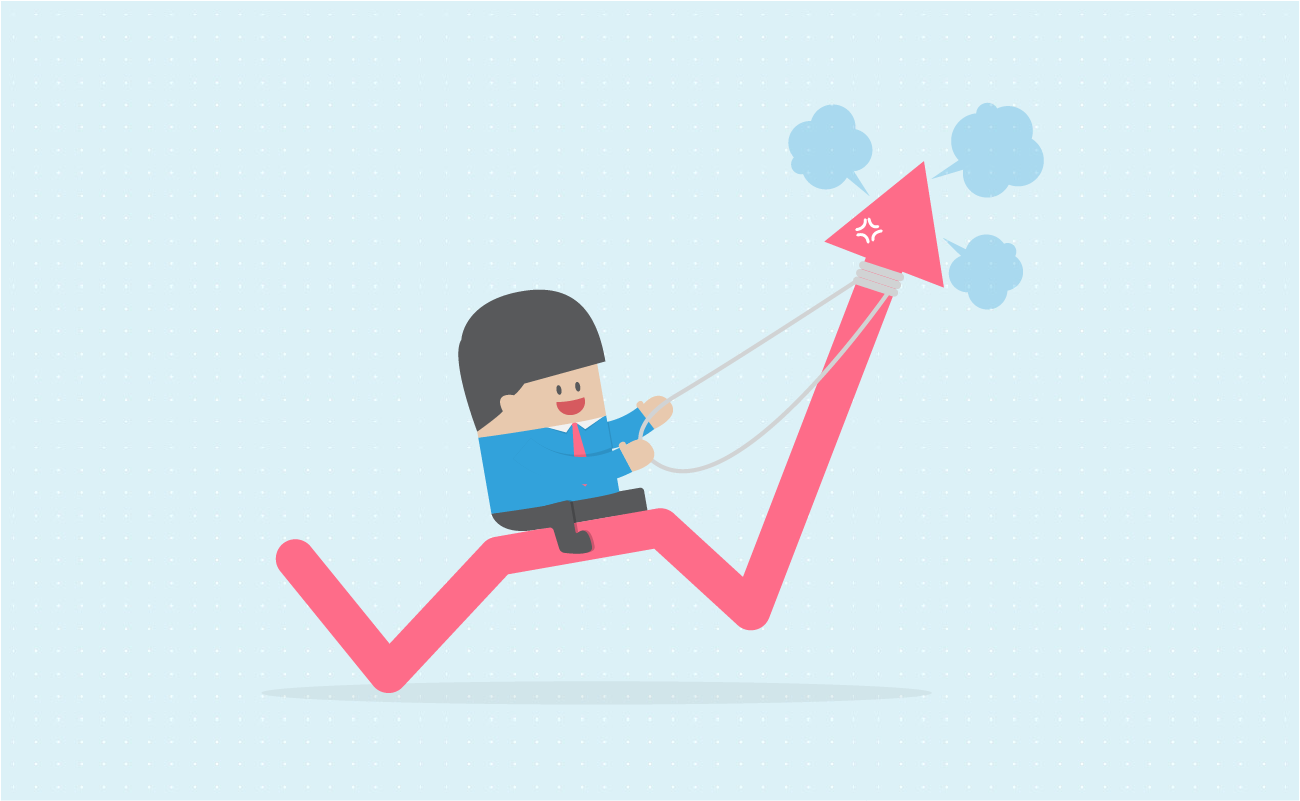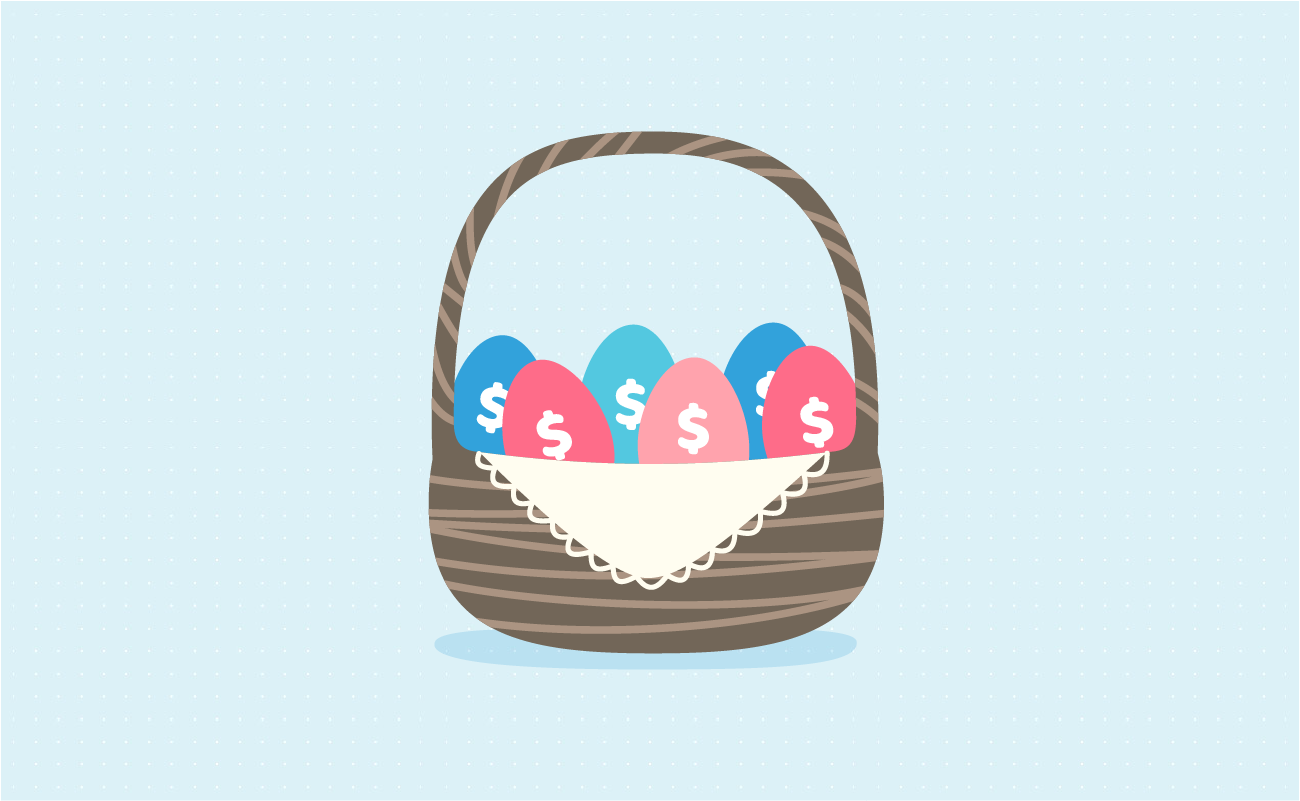 Inflation, PV & FV Calculator
Inflation, PV & FV CalculatorThis page offers 3 calculators to estimate the impacts of inflation.
This calculator will show you how inflation has affected consumer buying power from a given base year to a given result year. Results are based on the annual average CPI (Consumer Price Index), as reported by the Bureau of Labor Statistics, for the years 1913 to 2018. The 2019 data point uses the average of the first 8 months of the year.
Use this calculor to figure the present value (PV) of a known amount of money you anticipate receiving in the future.
This calculator makes it easy to estimate the future value of a one-time investment in an ordinary savings account, CD,or other financial instrument. Enter you initial investment, the anticipated annual rate of return & how long you will allow the investment to grow.
Guide published by Jose Abuyuan on February 2, 2020

For the long-term investor, inflation is the big bad. It is the overarching specter that casts an ominous shadow on your retirement funds. You worry about inflation daily as well. Will prices go so high that your money becomes worthless? Perhaps not. It would be worth less, though, and that poses a challenge to everyday living.
Most people parse inflation as a bad thing. And they aren't wrong in a sense. Inflation rate reduces their buying power and can jeopardize their cash-based assets. Inflation in excess, meanwhile, is nothing short of an economic crisis.
Inflation is one of those realities. It is as inevitable as the big purple villain in your favorite superhero film. Yet contrary to its reputation, it is hardly as malevolent—most of the time. It is a barometer of the health of the economy. Indeed, in the right conditions, inflation can instead be your ally.
Inflation is the change of the price of all goods in an economy. It is a critical measure of economic performance. Its impact has profound and far-reaching consequences to your finances.
What most people understand about inflation is usually limited to its immediate effects. Inflation is tied to rising prices. People worry about how changes in inflation could throw their budgets off. Meanwhile, nostalgic addicts point out the disparity of how things used to cost then and now. Investors quiver at the losses they can expect from their assets.
This is often exaggerated in cartoons. Some gags involve characters in the 19th Century buying luxury goods with mere cents. Others, set in the distant future, would mockingly place absurd price tags on common items. These situations rarely (but not never) appear in real life.
There are several ways of measuring inflation. The standard used by the United States is the consumer price index (CPI). This is the average derived from the most used goods and services. The cost of these goods would vary. Goods in high demand, for instance, would undergo an exponential increase in price. Meanwhile, other products might go down in price because of a change in supply. CPI statistics in the U.S. are available at the Bureau of Labor Statistics website.
You can calculate the growth in rates using this equation:
100 × (Current Period CPI − Prior Period CPI) / Prior Period CPI = Inflation Rate
We can now calculate the growth of inflation between 2019 and 2018:
100 × (255.66 − 251.11) / 251.1= 1.8 percent
Adjusting for inflation is a matter of ratios. To find out how much your money would've been worth in a different year, follow this formula:
Your money / Equivalent value = Current CPI / Different Year CPI
For instance, how much would $5,000 from 1913 be worth in 2019? Let's find out:
$5,000 / $193.6 = 255.6 / 9.9
In this example, $5,000 in 2019 is worth $193.6 in the year 1913.
Since the Federal Reserve was created in 1913 monetary policy has had a pro-inlationary bias. The impacts of inflation force savers to invest in order to protect and preserve their purchasing power. The following table shows how a theoretical inflation rate of 2% would impact a person's purchasing power for $100,000 over a working career of 50 years.
| Year | Nominal | Inflation | Purchasing Power | Loss |
|---|---|---|---|---|
| 2021 | $100,000 | 2% | $98,000 | $2,000 |
| 2022 | $100,000 | 2% | $96,040 | $3,960 |
| 2023 | $100,000 | 2% | $94,119 | $5,881 |
| 2024 | $100,000 | 2% | $92,237 | $7,763 |
| 2025 | $100,000 | 2% | $90,392 | $9,608 |
| 2026 | $100,000 | 2% | $88,584 | $11,416 |
| 2027 | $100,000 | 2% | $86,813 | $13,187 |
| 2028 | $100,000 | 2% | $85,076 | $14,924 |
| 2029 | $100,000 | 2% | $83,375 | $16,625 |
| 2030 | $100,000 | 2% | $81,707 | $18,293 |
| 2031 | $100,000 | 2% | $80,073 | $19,927 |
| 2032 | $100,000 | 2% | $78,472 | $21,528 |
| 2033 | $100,000 | 2% | $76,902 | $23,098 |
| 2034 | $100,000 | 2% | $75,364 | $24,636 |
| 2035 | $100,000 | 2% | $73,857 | $26,143 |
| 2036 | $100,000 | 2% | $72,380 | $27,620 |
| 2037 | $100,000 | 2% | $70,932 | $29,068 |
| 2038 | $100,000 | 2% | $69,514 | $30,486 |
| 2039 | $100,000 | 2% | $68,123 | $31,877 |
| 2040 | $100,000 | 2% | $66,761 | $33,239 |
| 2041 | $100,000 | 2% | $65,426 | $34,574 |
| 2042 | $100,000 | 2% | $64,117 | $35,883 |
| 2043 | $100,000 | 2% | $62,835 | $37,165 |
| 2044 | $100,000 | 2% | $61,578 | $38,422 |
| 2045 | $100,000 | 2% | $60,346 | $39,654 |
| 2046 | $100,000 | 2% | $59,140 | $40,860 |
| 2047 | $100,000 | 2% | $57,957 | $42,043 |
| 2048 | $100,000 | 2% | $56,798 | $43,202 |
| 2049 | $100,000 | 2% | $55,662 | $44,338 |
| 2050 | $100,000 | 2% | $54,548 | $45,452 |
| 2051 | $100,000 | 2% | $53,457 | $46,543 |
| 2052 | $100,000 | 2% | $52,388 | $47,612 |
| 2053 | $100,000 | 2% | $51,341 | $48,659 |
| 2054 | $100,000 | 2% | $50,314 | $49,686 |
| 2055 | $100,000 | 2% | $49,307 | $50,693 |
| 2056 | $100,000 | 2% | $48,321 | $51,679 |
| 2057 | $100,000 | 2% | $47,355 | $52,645 |
| 2058 | $100,000 | 2% | $46,408 | $53,592 |
| 2059 | $100,000 | 2% | $45,480 | $54,520 |
| 2060 | $100,000 | 2% | $44,570 | $55,430 |
| 2061 | $100,000 | 2% | $43,679 | $56,321 |
| 2062 | $100,000 | 2% | $42,805 | $57,195 |
| 2063 | $100,000 | 2% | $41,949 | $58,051 |
| 2064 | $100,000 | 2% | $41,110 | $58,890 |
| 2065 | $100,000 | 2% | $40,288 | $59,712 |
| 2066 | $100,000 | 2% | $39,482 | $60,518 |
| 2067 | $100,000 | 2% | $38,692 | $61,308 |
| 2068 | $100,000 | 2% | $37,919 | $62,081 |
| 2069 | $100,000 | 2% | $37,160 | $62,840 |
| 2070 | $100,000 | 2% | $36,417 | $63,583 |
If the above money was invested in an instrument yielding an 8% annual compounded rate of return, here is how that would impact the nominal value and spending power of your savings.
| Year | Nominal | Return | Inflation | Purchasing Power |
|---|---|---|---|---|
| 2021 | $100,000 | 8% | 2% | $98,000 |
| 2022 | $108,000 | 8% | 2% | $105,840 |
| 2023 | $116,640 | 8% | 2% | $114,307 |
| 2024 | $125,971 | 8% | 2% | $123,452 |
| 2025 | $136,049 | 8% | 2% | $133,328 |
| 2026 | $146,933 | 8% | 2% | $143,994 |
| 2027 | $158,687 | 8% | 2% | $155,514 |
| 2028 | $171,382 | 8% | 2% | $167,955 |
| 2029 | $185,093 | 8% | 2% | $181,391 |
| 2030 | $199,900 | 8% | 2% | $195,902 |
| 2031 | $215,892 | 8% | 2% | $211,575 |
| 2032 | $233,164 | 8% | 2% | $228,501 |
| 2033 | $251,817 | 8% | 2% | $246,781 |
| 2034 | $271,962 | 8% | 2% | $266,523 |
| 2035 | $293,719 | 8% | 2% | $287,845 |
| 2036 | $317,217 | 8% | 2% | $310,873 |
| 2037 | $342,594 | 8% | 2% | $335,742 |
| 2038 | $370,002 | 8% | 2% | $362,602 |
| 2039 | $399,602 | 8% | 2% | $391,610 |
| 2040 | $431,570 | 8% | 2% | $422,939 |
| 2041 | $466,096 | 8% | 2% | $456,774 |
| 2042 | $503,383 | 8% | 2% | $493,316 |
| 2043 | $543,654 | 8% | 2% | $532,781 |
| 2044 | $587,146 | 8% | 2% | $575,403 |
| 2045 | $634,118 | 8% | 2% | $621,436 |
| 2046 | $684,848 | 8% | 2% | $671,151 |
| 2047 | $739,635 | 8% | 2% | $724,843 |
| 2048 | $798,806 | 8% | 2% | $782,830 |
| 2049 | $862,711 | 8% | 2% | $845,456 |
| 2050 | $931,727 | 8% | 2% | $913,093 |
| 2051 | $1,006,266 | 8% | 2% | $986,140 |
| 2052 | $1,086,767 | 8% | 2% | $1,065,032 |
| 2053 | $1,173,708 | 8% | 2% | $1,150,234 |
| 2054 | $1,267,605 | 8% | 2% | $1,242,253 |
| 2055 | $1,369,013 | 8% | 2% | $1,341,633 |
| 2056 | $1,478,534 | 8% | 2% | $1,448,964 |
| 2057 | $1,596,817 | 8% | 2% | $1,564,881 |
| 2058 | $1,724,563 | 8% | 2% | $1,690,071 |
| 2059 | $1,862,528 | 8% | 2% | $1,825,277 |
| 2060 | $2,011,530 | 8% | 2% | $1,971,299 |
| 2061 | $2,172,452 | 8% | 2% | $2,129,003 |
| 2062 | $2,346,248 | 8% | 2% | $2,299,323 |
| 2063 | $2,533,948 | 8% | 2% | $2,483,269 |
| 2064 | $2,736,664 | 8% | 2% | $2,681,931 |
| 2065 | $2,955,597 | 8% | 2% | $2,896,485 |
| 2066 | $3,192,045 | 8% | 2% | $3,128,204 |
| 2067 | $3,447,409 | 8% | 2% | $3,378,460 |
| 2068 | $3,723,201 | 8% | 2% | $3,648,737 |
| 2069 | $4,021,057 | 8% | 2% | $3,940,636 |
| 2070 | $4,342,742 | 8% | 2% | $4,255,887 |
The anticipated impacts of inflation and the anticipated rates of return impact the present value of a future sum of money and the future value of a current sum of money. The formulas for present value and future value are as follows
FV = PV (1 + r)n
where
Note: if the money is compounded more frequently than annually you would divide r by that frequency and multiply n by that frequency.
FV = PV (1 + r/f)nf
To shift from nominal to real values you can calculate the real rate of return as follows
real rate of return = ((1 + nominal rate of return) / (1 + inflation rate)) - 1
FV A = A * {(1 + r)n - 1} / r
where
PV = FV / (1 + r)n
where
As the medium of exchange, money is only as worth as the items it can buy. As demand increases for items, so would their costs. One early indicator of possible inflation is the price of commodities. If the cost of raw materials increases, those of the products they are based on would also rise.
Most of the currencies in circulation today are fiat money. They are backed by the confidence people have in the government that issues them. An irresponsible government devalues the money it prints. Governments can also print out too much money, often as a way of paying off excessive debts. Paired with a poor economic climate and a shortage of goods, and it can be a recipe for disaster.
Inflation can also be caused by the sudden increase in money supply. The more money is in circulation, the less the money is worth. Fiat currencies, which are easily printed, are prone to inflation. Although metal-backed currencies are said to resist inflation better, this isn't always the case. A sudden influx of gold or silver can rapidly devalue currencies it was based on.

Inflation and deflation have varying impacts on different parties across the economy.
Depending on how inflation happens and what it affects, it can be beneficial or harmful. A small increase in the rate of inflation is seen as a healthy sign by economists. A modest growth in inflation indicates an increase in economic activity. The economy's health is dependent on people buying things, and rising prices is often a sign of steady growth.
As demand grows, so do prices. To make more money, businesses scale up their operations. They raise wages to attract and retain new employees. This increases the buying power of the average person, which leads to more demand (you get the idea). If production is capable of meeting demand, the resulting inflation rates remain sustainable.
Inflation also creates an incentive for further spending. People would rather buy something today than pay more for the same tomorrow. This is called demand-pull inflation.
Inflation is a good thing for people with fixed-rate debts. As the inflation rates go up, the true value of the money they need to pay shrinks along with it. In a sense, they end up owing less money. If their cash flow increases, they could also pay off their debts without affecting their incomes. Their creditors, however, aren't so lucky.
Moreover, inflation is also a good way to deal with sovereign debt. A country's government benefits from inflation by lowering the value of the debts they must pay. A government running on fiat currency can print more money to pay off the debts at the cost of spurring inflation. This is not without its consequences.

If inflation goes up too fast, wages and salaries often don't rise fast enough to keep up. This situation is familiar to many lower-income American workers today. Stagnant wages and inflation make it difficult for the average person to afford necessities. This situation is worsened with unemployment, creating a state known as “stagflation.”
Astronomic rates of inflation are also a sign of a shortage. If the production of necessities such as food do not keep up with demand, then the prices would rise anyway. These shortages cause businesses to contract their operations. In turn, this leads to stagnant wages and layoffs. Although stopgaps such as price controls can soften the blow for consumers for a while, it does not solve the underlying problem.
Runaway hyperinflation is tied to the collapse of many economies, including that of Germany in the 1920s and Zimbabwe in the mid-2000s. Both countries' governments mishandled their national debts. This left them vulnerable to the crippling domestic issues that hampered economic development. Situations like these are not as likely today but are still a scary thought to ponder.
What most people do not understand is that the opposite problem exists. A slowing rate of inflation is a good sign if the rates were growing too high. If they slow down too fast, however, it could be a sign of deflation. Economic deflation is a symptom of a fundamental problem within the economy. The sudden drop in prices across the board indicates a stagnant or shrinking economy.
Putting it simply, deflation happens when people aren't buying anything. What is causing this is usually not a good sign. It indicates a smaller market for consumer goods. This, in turn, would lead to a downsizing of many major industries. The loss of jobs that follows leads to reduced production. Unemployment also scuttles the people's buying power, starting the cycle anew.
Although dropping prices might seem good for sellers and buyers, it is not a good thing in the long run. In anticipation of even lower prices in the future, consumers stop buying in the present. Deflation is also tied to metal-based currencies. Here, goods lose value because there isn't enough money in circulation.

Inflation that grows faster than interest rates is bad news for prospective retirees. Your savings lose their buying power. The rising cost of living would make it difficult to subsist on your retirement funds saved in cash.
Sadly, many prospective retirees do not think much of inflation despite seeing it in action all their lives. In good economic times, inflation is matched by a growth in income. This helped cushion the blow of inflation and, in some cases, made it a non-issue. Things are different after retirement. With no other source of income but your investments, you're in a precarious position as the prices start to soar.
There is good news for investors, though. Both stocks and bonds outperform inflation in all but the worst economic situations. You should take steps to hedge against inflation early on in your career. Start by rethinking your approach to risks. As scary as market fluctuations are, they are a non-issue in the long run.
Keep a balanced and diverse portfolio of assets. Although cash-based securities have low risk profiles, their values are tied to money. One noted exception are treasury inflation-protection securities. These adjust the principal with inflation and pay you back the higher amount.
Meanwhile, equity investments such as stocks often grow in value despite inflation. Investing in these makes sense if you are young. Longer time horizons help you weather through short-term volatility and build lasting value. The reverse rings true when you are closer to retirement. You can't always hedge against both inflation and volatility.

Of course, you might not have the same risk tolerance if you are older. Especially when you don't have time on your side, market volatility might prove too risky. Instead, consider increasing the size of your retirement earnings. Having a larger fund (and greater interest returns) would provide you with the needed buffer against inflation. Although you'll still see some losses, you won't feel as deprived.
Higher salaries afforded by a healthy inflation rates can work to your advantage. Use this as an opportunity to bolster your contributions to your retirement funds. If you can, make the maximum contributions to your 401(k) each year. Take up your company's offer to match your contributions to employee retirement accounts.
Likewise, you also have compounding on your side when you are young. Thus, increasing your contributions could also help you build wealth when playing the long game.
To understand how much you need to save, you'll need to have an idea of the value your savings will hold in the future. We cannot know for sure how things will turn out, but historic and current trends can give us a clue of what to expect.
Use the calculators on this page to determine the value of your dollar in the past and possible future.
Owning physical assets might also help you hedge against inflation, albeit with limits. Assets that appreciate do so alongside inflation. If you own a house, you might already be on your way to preserving your wealth regardless of inflation. Owning physical real estate isn't your only option:
Active hedges against inflation have their own investment risks. Dedicate no more than 20 percent of your portfolio to these investments at any one time.
The challenge is that after retirement, you could be in for the long haul. Life expectancies keep growing longer each year. A healthy adult can expect to live up 30 years past retirement age. A lot can happen before you turn 90, so it's important to make sure that your nest egg stays with you for longer.

Conventional wisdom recommends you withdraw only four percent of your retirement savings on the first year. On every subsequent year, adjust your next withdrawals based on inflation. Retirement experts suggest that you should withdraw even less (around three percent) unless required by law.
The average person has no direct control over inflation. Often, the most we can do to protect ourselves is to endure inflation and plan around it. In good times, you can even use the raises that come with inflation to save more money. The right choices and a little forward thinking can help you reduce inflation's impact on your financial future.
Jose Abuyuan is a web content writer, fictionist, and digital artist hailing from Las Piñas City. He is a graduate of Communication and Media Studies at San Beda College Alabang, who took his internship in the weekly news magazine the Philippines Graphic. He has authored works professionally for over a decade.